If you buy something from a Verge link, Vox Media may earn a commission. See our ethics statement. I don’t really care what the M2 MacBook Pro gets on benchmarks. I know that sounds like an odd statement coming from someone who runs benchmarks for a living, but this is not a device where they matter all that much because, if you’re the kind of person running benchmarks or the kind of person to whom benchmark scores are at all relevant, I’m going to tell you right at the top that you shouldn’t be buying this. Let us explore the current MacBook market. This MacBook Pro has the exact same chassis as the 13-inch M1 MacBook Pro that was released in 2020 (which itself used a design that dates back to 2016). It’s the same 2560 x 1600 screen, the same Magic Keyboard, the same two Thunderbolt ports, the same Touch Bar, and the same slightly tapered sides. Remember all those cool new (technically old) design features, like HDMI ports, SDXC slots, and MagSafe charging Apple put on the MacBook Pro models it released in late 2021? Yeah, none of those are here. Neither is the fancy Mini LED display or upgraded 1080p webcam. There has, basically, only been one change made to the MacBook Pro from 2020: it has a new processor. (Okay, so Apple’s also added a 24GB memory option, the speakers now support Spatial Audio, the jack has “advanced support for high-impedance headphones,” and the adapter is a whole six watts more powerful... but the processor is the main thing.) Like the M1, the M2 uses Apple’s custom Arm silicon. It has more transistors than the M1, more memory bandwidth, and an updated media engine as well as additional GPU cores (10, to the M1’s eight). It’s a new chip in what is, at this point, a dated chassis. The 13-inch M2 MacBook Pro starts at $1,299. For that base price, you get an eight-core CPU with a 10-core GPU, 8GB of unified memory, and 256GB of SSD storage. The very cheapest model of the 14-inch MacBook Pro comes with an M1 Pro processor (eight-core CPU, 14-core GPU) but with 16GB of unified memory and 512GB of storage. That model would cost $1,999. Now, Apple sent me an M2 model that’s a step up from the base; this one has 16GB of unified memory and 1TB of storage. It costs $1,899 on Apple’s website, while a 14-inch M1 Pro model with those RAM and storage specs would be $2,199. Basically, the MacBook Pro with M2 is floating consistently around several hundred dollars under its more powerful and modern-looking 14-inch sibling. But those several hundred dollars buy you a heck of a lot of perks that will be of particular benefit to professional users, including a bigger screen, MagSafe, more ports, and all the extra cores. The M1 Pro CPU also has more performance-oriented cores, while the M2 has more efficiency cores aimed at extending battery life. Read more:Apple MacBook Pro 14 and 16 reviewandApple MacBook Pro with M1 review Verge Score 8 out of 10 Buy for $1,299.00 from Apple Buy for $1,299.00 from Best Buy Buy for $1,499.00 from Amazon We’re going to talk about benchmarks later on, but I’ll spoil the surprise right now: as everyone expected, the M1 Pro smokes the M2 in most cases. It’s close to doubling its scores on some of our usual benchmark tests — it’s performing more than twice as well on others. It is easily $300 better for professional work. For this reason, the target audience for this M2 MacBook Pro is not folks who will be exporting things in Premiere all day. The target audience is, as far as I can tell, people like me. I spend most of my day in Google Docs, spreadsheets, and Slack — the 14-inch MacBook Pro is overkill for what I need, and it costs more than I want to spend. But I do occasionally need to do things in Photoshop, Lightroom, and Audition. I (very) occasionally like to game, and I want something that can sustain those loads. This would be the perfect device for someone like me — if it weren’t for the new MacBook Air. This new MacBook Air, also powered by the M2, is coming very soon. It will be, as far as I can tell from Apple’s website, the same price as the M2 MacBook Pro for the same specs in most cases (they level out at the $1,499 mark). But, unlike the MacBook Pro, the M2 MacBook Air did get a big redesign, and it includes all kinds of new features — including new colors, a larger display, a 1080p webcam, and, especially, MagSafe — that this device doesn’t have. Apple hasn’t sent this device to us yet, and it’s not up for preorder at this time, either. But it very well may be a much better choice for my use case. And that puts the 2022 MacBook Pro — and this review — in a bit of a bizarre spot. The question of whether you should buy this MacBook Pro is, frankly, not one I can answer until we know exactly how good this forthcoming MacBook Air is. What I can speak to right now is how well the M2 performs and what kind of gains it’s made over the M1. In summary: the M2 is fast and efficient. The M1 was also fast and efficient. The 2022 MacBook Pro can sustain heavy loads for long periods of time. Its 30-minute Cinebench score was actually a bit higher than its 10-minute Cinebench score, which is not something we see all the time. Results were also the same regardless of whether the device was on power or battery, which we very rarely see with Windows laptops. And though the existence of an active cooling system (read: a fan) is what traditionally differentiates the MacBook Pro from the MacBook Air, I never heard the fan on this M2 device — not even when I was running games. We said all this about the M1 MacBook Pro as well. This is just to say that those qualities remain. How did this thing do on benchmarks? In CPU results — Geekbench, Cinebench, the Xcode benchmark, etc. — the results we’re seeing are somewhat better than the M1. In GPU tests, including some games, the results are substantially better. That means gaming is much better, as I’ll discuss later on. The M2 did edge out the pricier M1 Pro in the single-core benchmarks I ran. That’s impressive in itself (it indicates that though the M1 Pro has more power cores than the M2 does, those cores aren’t as strong as the M2’s power cores on an individual level). But it also bodes well for the M2 Pro, Max, and Ultra variants that we’ll presumably see down the line; they’ll likely display single-core speed improvements over their M1-based predecessors, rather than just loading on more cores. So, checkmark: technological progress has been made. However, the delta between the M1 Pro and the M2 is significantly larger than the delta between the M2 and the M1 in every test here, which underscores how much of a better buy the M1 Pro is for users who will regularly be stressing the system. To repeat: this is not unexpected; it’s just meant to demonstrate that $300 can buy you quite a lot more performance. What’s more important for the Me demographic is how the M2 performs on the types of tasks that the M1 Pro is overkill for. So, I put the M2 MacBook Pro and the M1 MacBook Pro side by side and did a bunch of my daily work on both of them. The M2 did, in some cases, lead to a technically faster experience. One of these cases was in Google Docs. The M2 was actually noticeably faster, by a few seconds, to open up a 350-page Google Doc. My spreadsheets with hundreds of rows were also noticeably faster to scroll through on the M2, and the newer MacBook was quicker to swap between tabs and run calculations. The 2022 MacBook was also better at gaming (though I will stress that this benchmark is just meant to showcase the graphic improvements that Apple has made — don’t buy a MacBook to play games). The previous MacBook ran the Shadow of the Tomb Raider benchmark at an average of 20fps, while the M2 device averaged 29fps, which is close to a 50 percent increase. That is the sort of difference I can see with my eyes while watching the benchmarks run (and is almost actually playable). I saw some other small improvements here and there. When I was playing around in Swift Playgrounds 4, the M2 was a smidge faster to load some of the interfaces and animations. I used Audition to add some CPU-heavy effects to an audio clip, and the M2 was just slightly faster to complete them. I don’t think either of these would really make a difference in my life if I hadn’t been using the computers side by side, but I suppose it’s time that would add up over long periods. And there were some cases where I couldn’t see differences, even when I was actively looking. The experience in Photoshop, where I desaturated some images and added some basic filters, was basically identical. Lightroom was the same deal. Most of what you might do in Audition, like playback and hopping through projects, was also the same. Results in Premiere Pro were mixed. The M2 did beat the M1 on the Puget Systems benchmark for Premiere Pro, which tests live playback as well as export performance. I didn’t actually see a sizeable difference in export time when I put the two laptops next to each other, though — the M1 actually finished first in most cases because the M2 kept getting caught on certain graphics. I don’t want to read too much into that because Premiere can be finicky with that kind of stuff, so it’s always hard to know exactly what’s going on. But it’s worth remembering that how well a computer does on some workloads isn’t always in its manufacturer’s control. Now, there is one way in which the MacBook Pro with M2 does have a significant advantage over the more expensive machines: battery life. This M2 MacBook Pro does not die. I have never said this about a laptop before: I was not able to fully run it down during my testing period. I can tell you that I’ve been able to run it well past 10 and a half hours, which is when the 14-inch M1 Pro device was dying when I reviewed that last year with this same workload. I was also, frankly, pushing this much harder than I pushed the 14-incher during that testing period, in part because I was having so much trouble getting the battery to run down — I threw Premiere, Audition, coding, and even some battery gaming at the M2 during these trial runs. I was still consistently seeing over half of the battery left after eight to nine hours of constant use. From the results I am getting, I would expect it to last 17 and a half to 18 hours. I’m not gonna lie: that does make this MacBook a tempting purchase for me, someone who spends a lot of time using my laptop in various places out and about. For me, battery is a more important consideration than raw performance. But, as I am continuing to remind myself, and as you should as well if you’re in my camp — the Air is coming. The Air has the same processor. It could very well have a similar lifespan, though Apple claims the Air will get “up to 18 hours” of use versus the Pro’s claimed 20 hours. I’ll just have to see when I’m able to review the new Air. Tech journalists often complain that chip bumps are boring, and I think in many cases they’re being unfair. I’m writing this review right now on an Intel MacBook Pro that only lasts four hours on battery, has fans that can constantly be heard around the office, takes multiple minutes to boot, and slows down if I have over 12 tabs open. New chips redefine what people can do; they make better work possible, and they make more work possible. The M2, though, is not quite doing that. It is an impressive chip, and it is faster than the M1. And it’s certainly helping the MacBook keep up as the Intels and AMDs of the world get better. But I’d be surprised if it will let anyone run a program or apply a filter or use a tool that they haven’t been able to before. The primary advantage it has over the M1 Pro (apart from its lower price and slight edge in single-core tasks) is battery life. And that’s a huge benefit but also something I want to avoid celebrating too much until I have a MacBook Air in my hands. Which leads me to the second question: should you buy it? If you must have an order in today, then yes. If you’re currently on an Intel MacBook (which I assume you are if you’re already looking to upgrade), the jump to the M2 will be huge. (I don’t even have to run benchmarks against older Intel systems — this machine is faster.) You’ll get all the benefits of the M1 that we raved about in 2020 plus some extra performance and extra battery life. And the caveats that the MacBook carried in 2020 with Rosetta performance penalties and various programs being incompatible have largely been ironed out in the two years since. But, if you’re not on a deadline, then the MacBook Air is coming. And, well, that’s a whole thing we’re going to have to sort out. It’s going to bring a number of benefits that the Pro doesn’t have. It may also have some drawbacks — but we don’t know yet what those are. I can see this being a good purchase for some people if the MacBook Air’s cards fall in a few very specific ways. But I need to see the cards. So watch this space. Related Every smart device now requires you to agree to a series of terms and conditions before you can use it — contracts that no one actually reads. It’s impossible for us to read and analyze every single one of these agreements. But we started counting exactly how many times you have to hit “agree” to use devices when we review them since these are agreements most people don’t read and definitely can’t negotiate. In order to get past the setup and actually use the MacBook Pro, you are required to agree to: These agreements are nonnegotiable, and you cannot use the laptop at all if you don’t agree to them. There are also several optional agreements, including: That’s three mandatory agreements and six optional ones.Share this story
All sharing optionsShare
All sharing options for:
Apple MacBook Pro 13 (2022) review: new chip, old threadsOur review of
Apple MacBook Pro 13 (2022)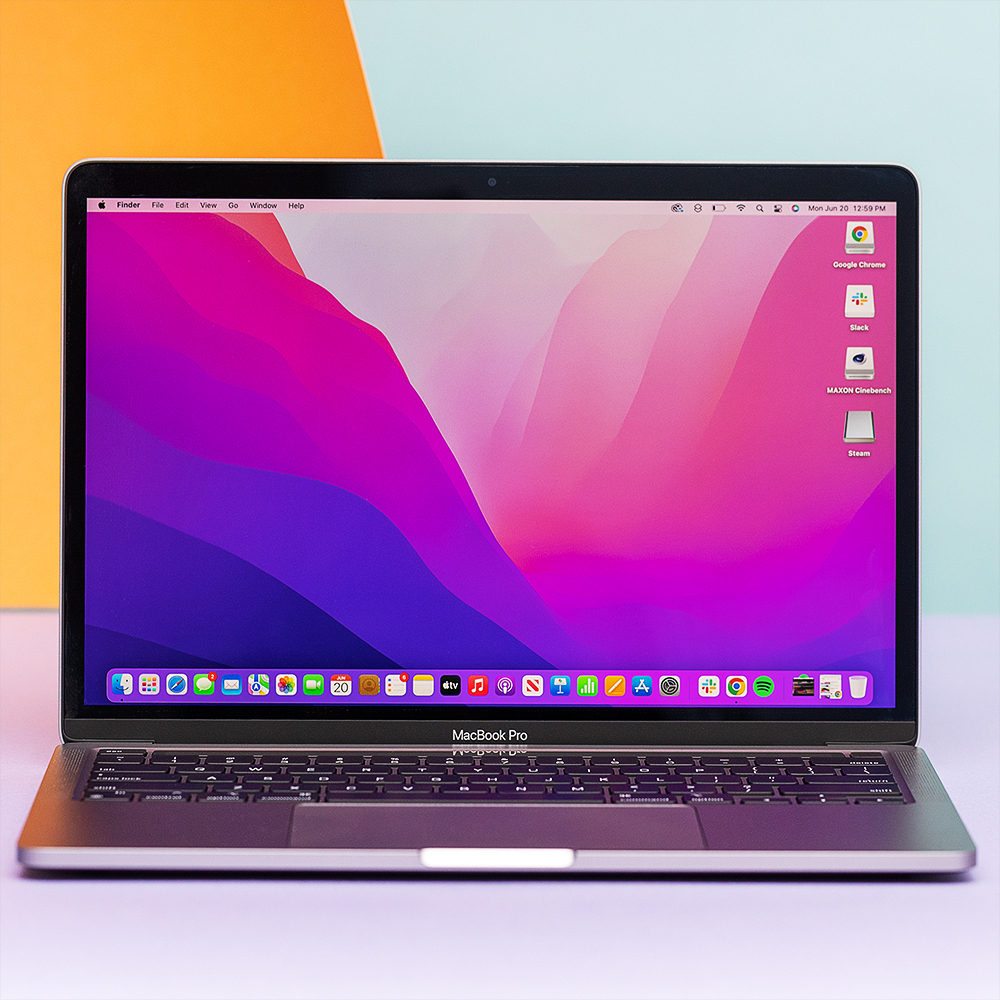
Good Stuff
Bad Stuff
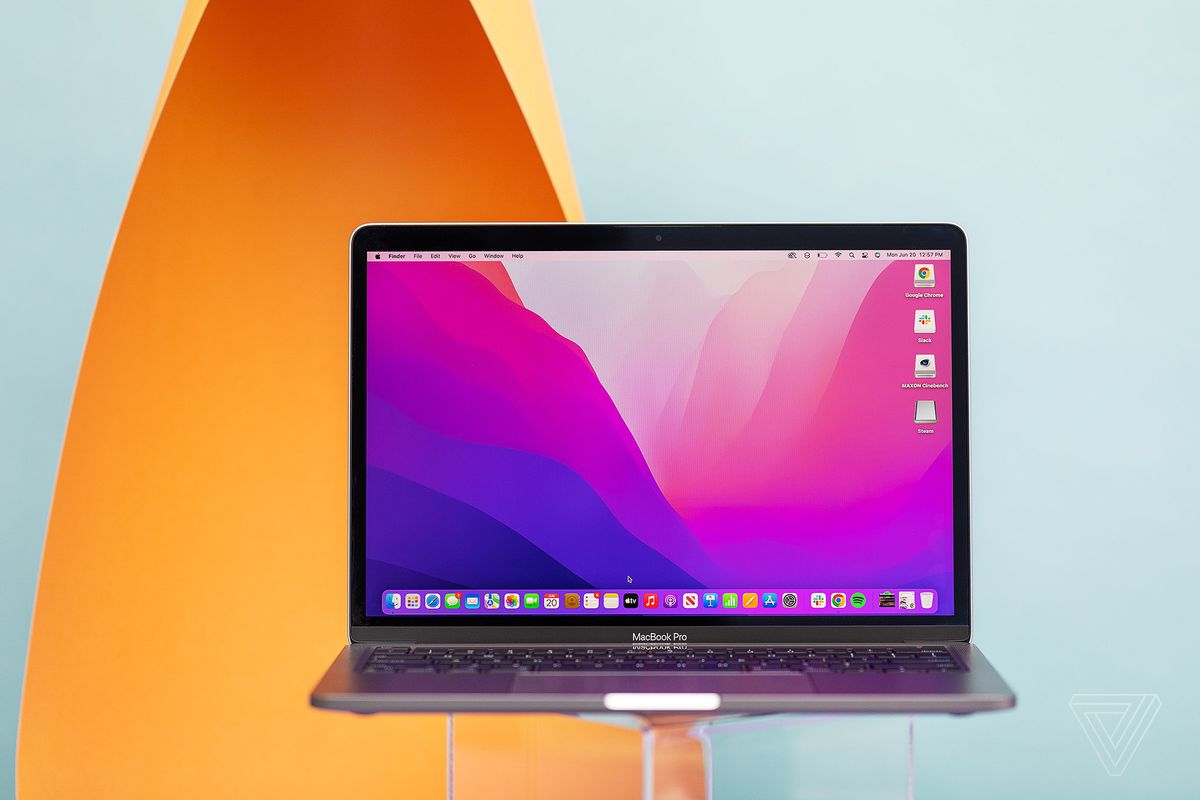
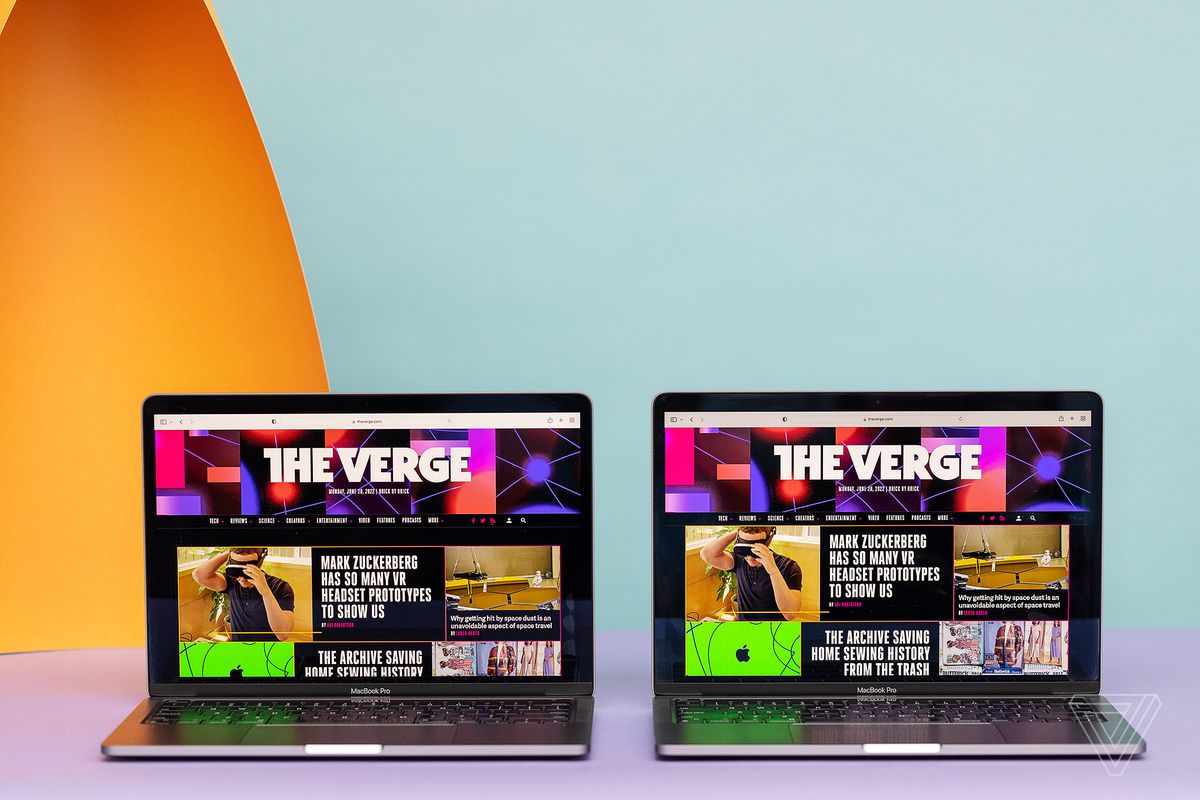
Everything that was excellent and groundbreaking about the M1 is still excellent and groundbreaking about the M2
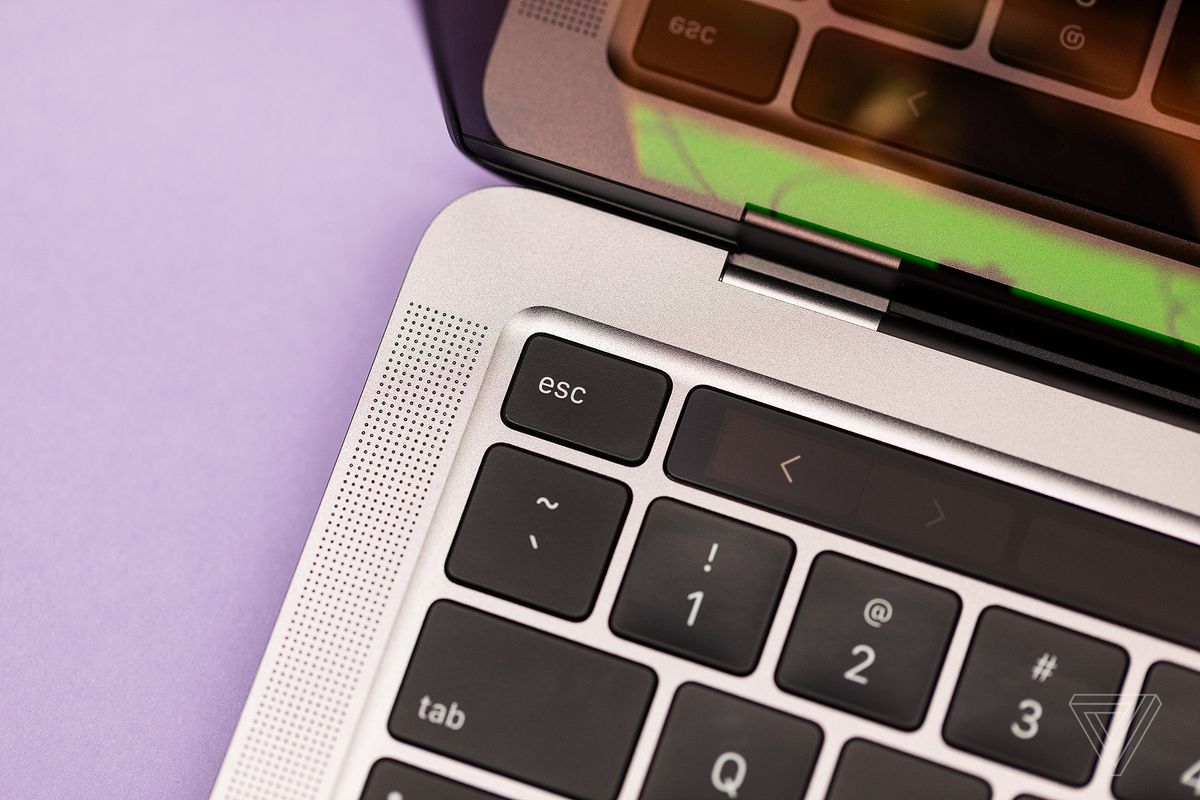
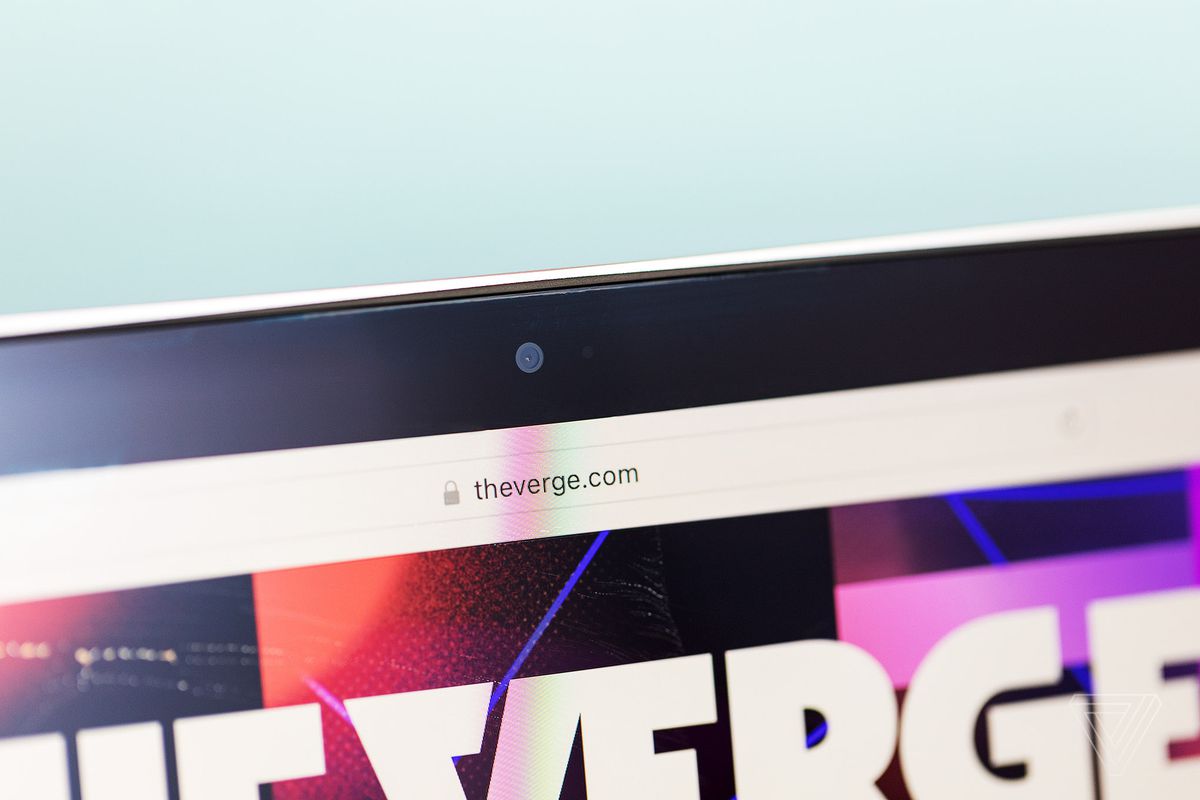
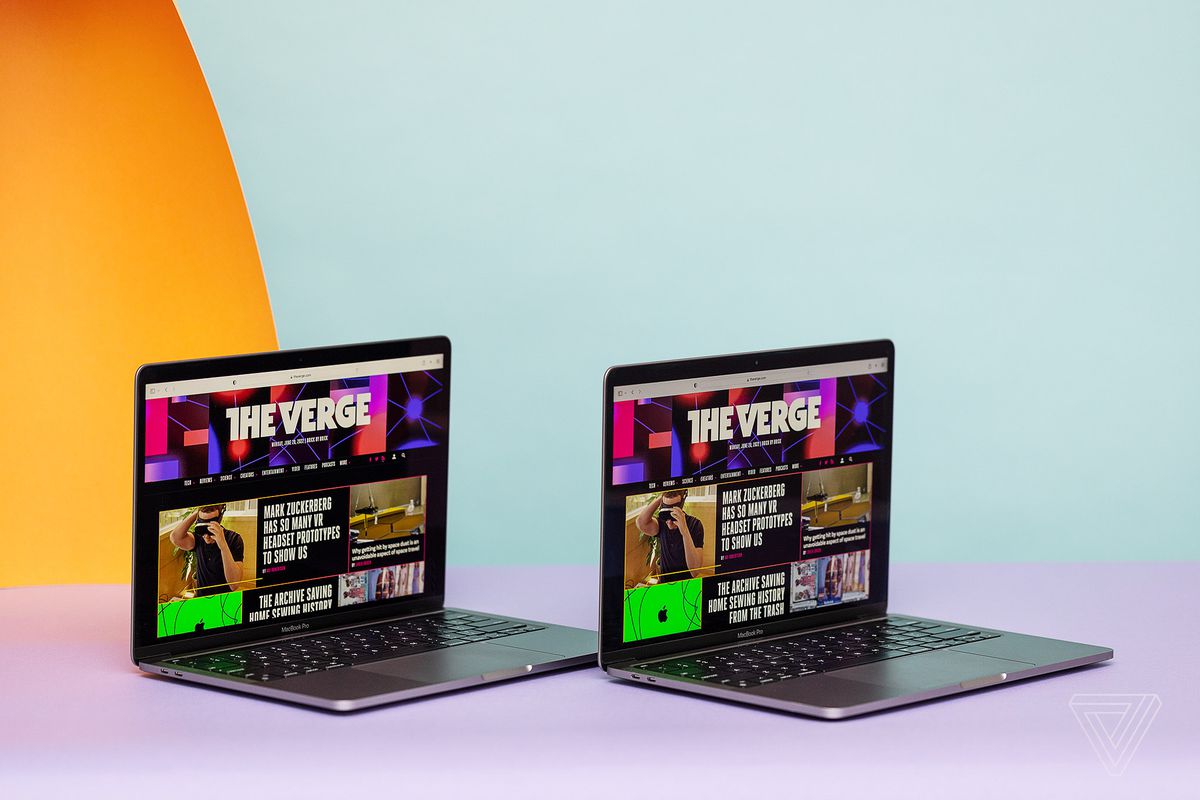
MacBook Pro 13 (2022)
Benchmark
Score
Benchmark
Score
Cinebench R23 Multi
8689
Cinebench R23 Single
1584
Cinebench R23 Multi looped for 30 minutes
8725
Geekbench 5.3 CPU Multi
8968
Geekbench 5.3 CPU Single
1937
Geekbench 5.3 OpenCL / Compute
27496
Shadow of the Tomb Raider benchmark (1920 x 1200, highest)
29fps
PugetBench for Premiere Pro
556
XcodeBenchmark
132.262 seconds
4K Export
0:07:09
MacBook Pro 13 (2020)
Benchmark
Score
Benchmark
Score
Cinebench R23 Multi
7729
Cinebench R23 Single
1519
Cinebench R23 Multi looped for 30 minutes
7729
Geekbench 5.3 CPU Multi
7554
Geekbench 5.3 CPU Single
1730
Geekbench 5.3 OpenCL / Compute
19211
Shadow of the Tomb Raider benchmark (1920 x 1200, highest)
20fps
PugetBench for Premiere Pro
435
XcodeBenchmark
150.125 seconds
4K Export
0:05:28
Apple MacBook Pro 14 (2021)
Benchmark
Score
Benchmark
Score
Cinebench R23 Multi
12363
Cinebench R23 Single
1532
Cinebench R23 Multi looped for 30 minutes
12368
Geekbench 5.3 CPU Multi
12596
Geekbench 5.3 CPU Single
1770
Geekbench 5.3 OpenCL / Compute
38688
Shadow of the Tomb Raider benchmark (1920 x 1200, highest)
46fps
PugetBench for Premiere Pro
1072
XcodeBenchmark
99.764 seconds
4K Export
0:02:50
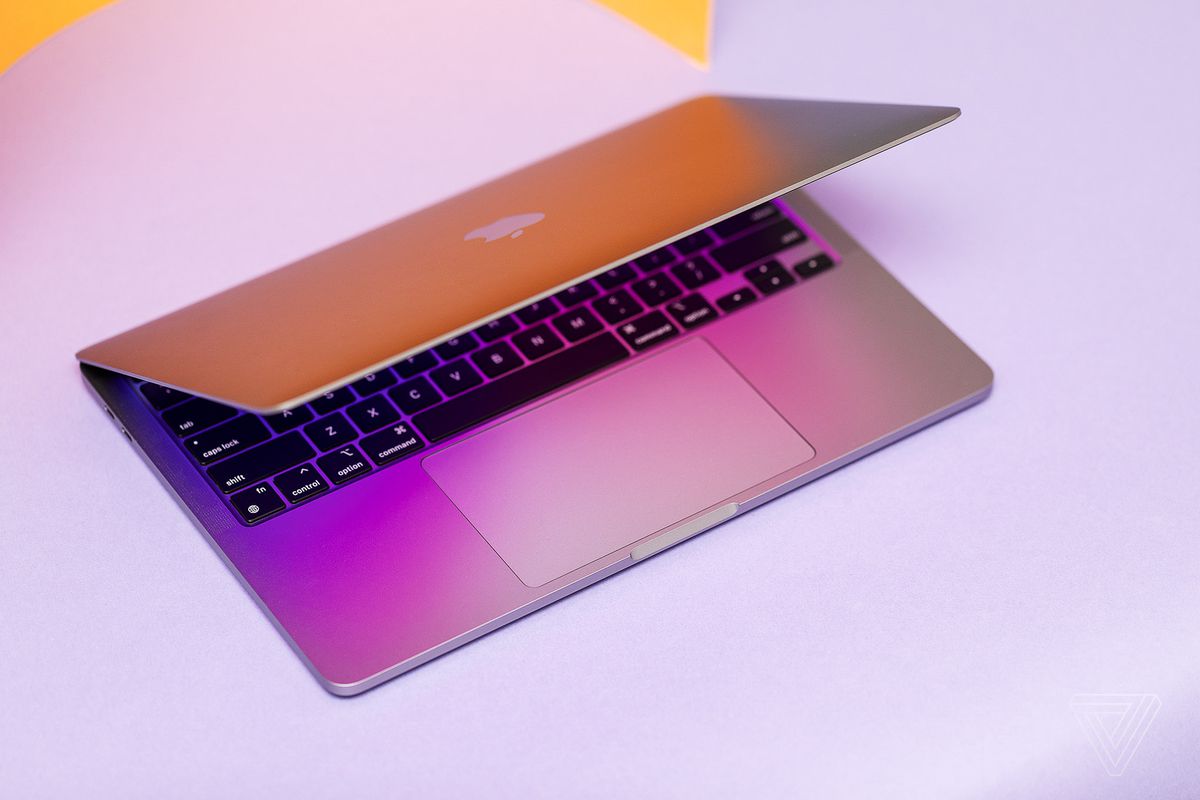
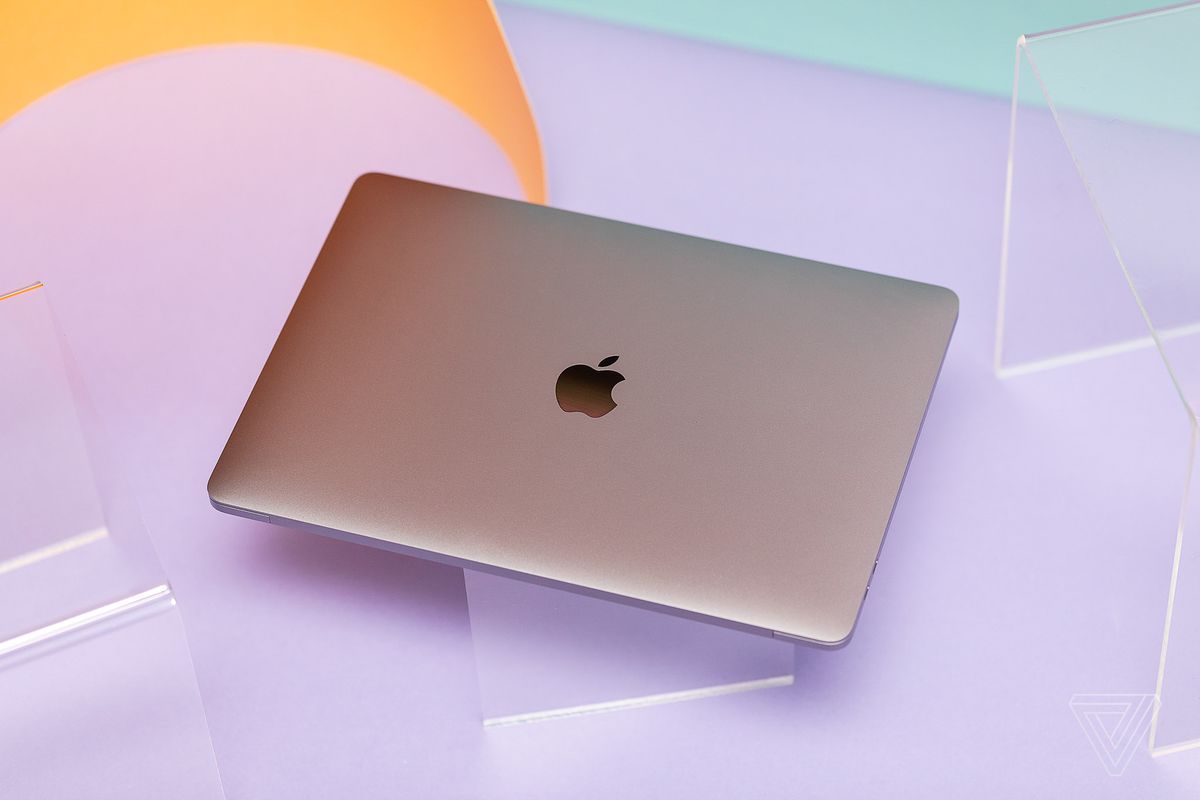
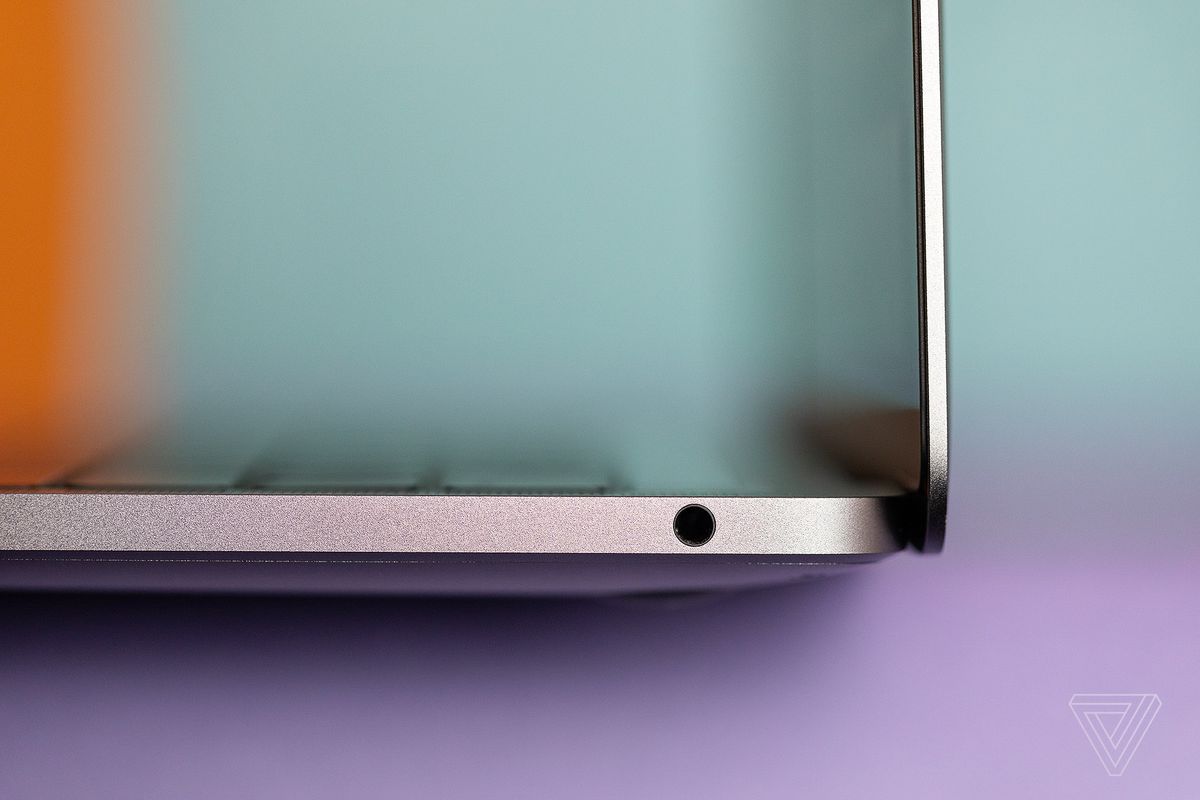
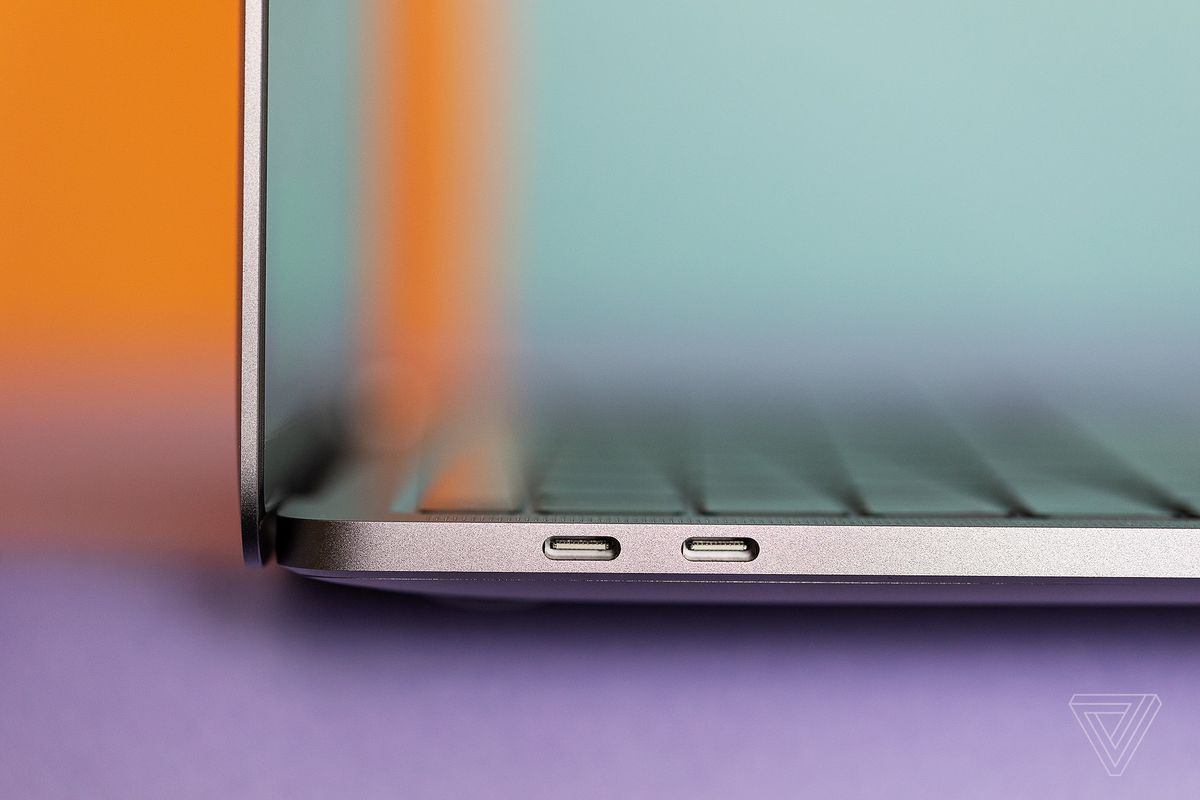
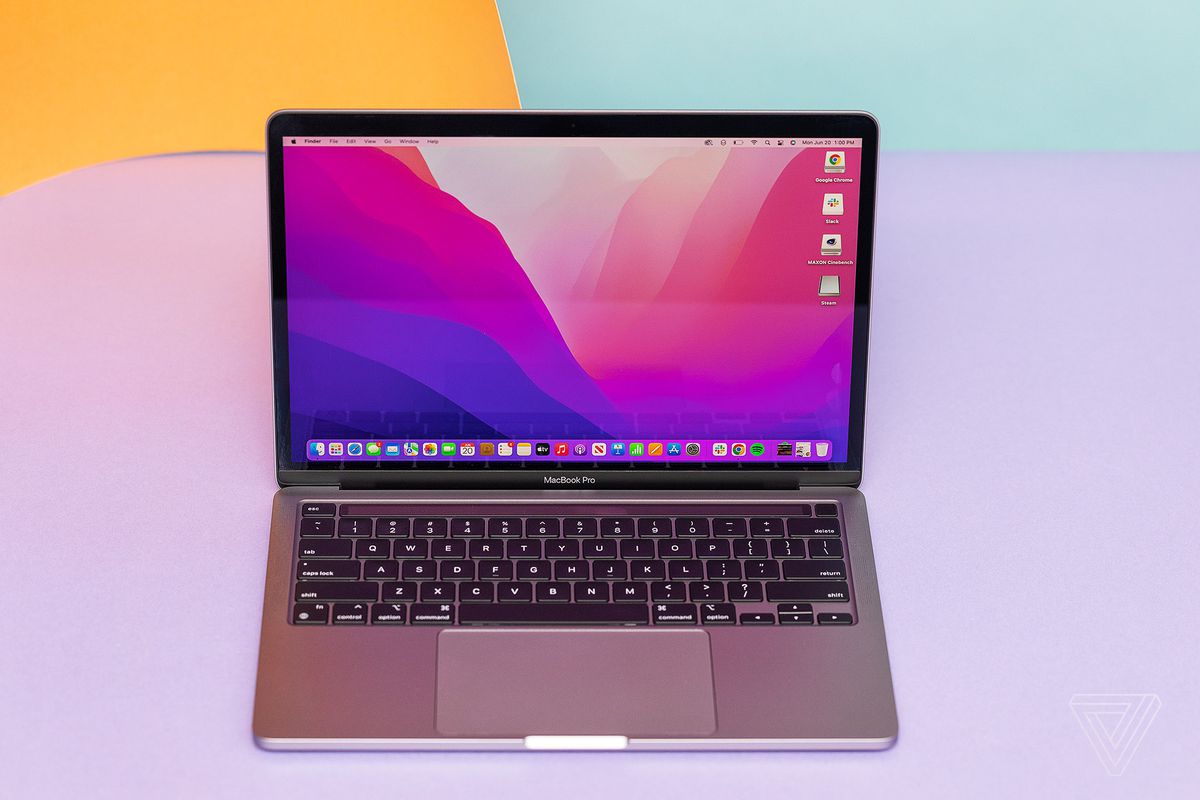
This chip isn’t going to result in a dramatically different experience from the M1
Apple MacBook Pro 14 and 16 review
Apple MacBook Pro with M1 review
Agree to Continue: Apple MacBook Pro 13 (2022)
暂无评论